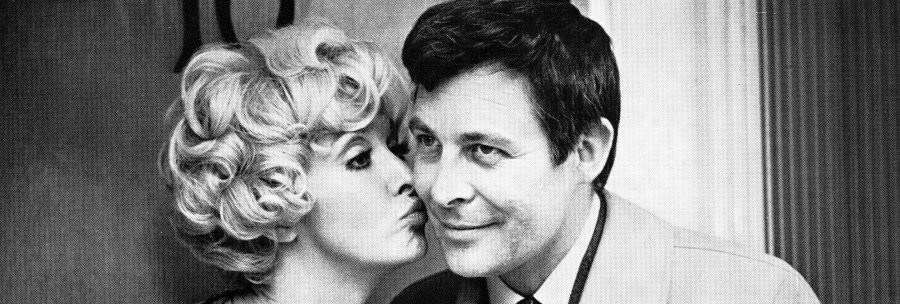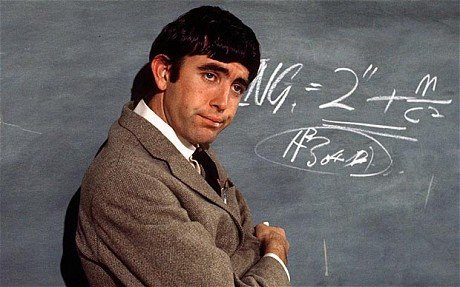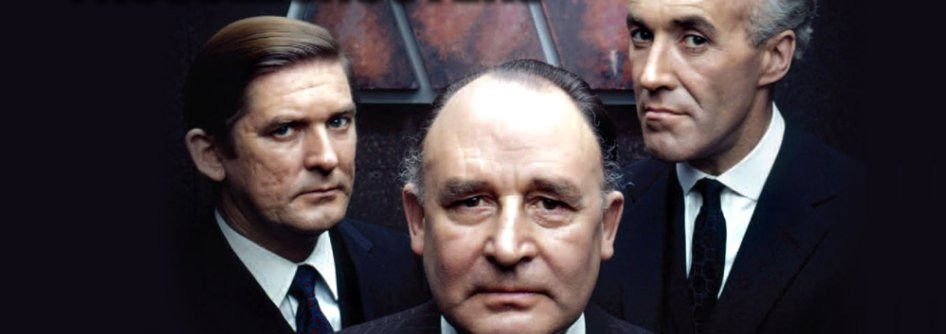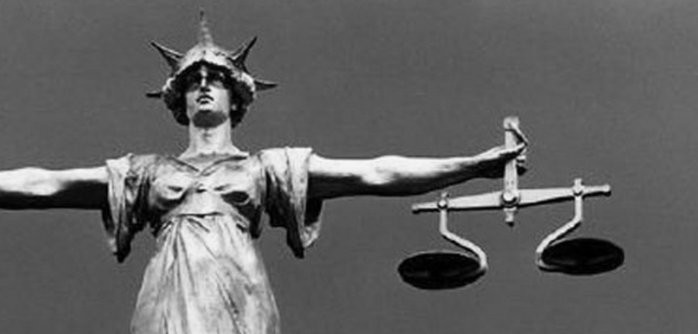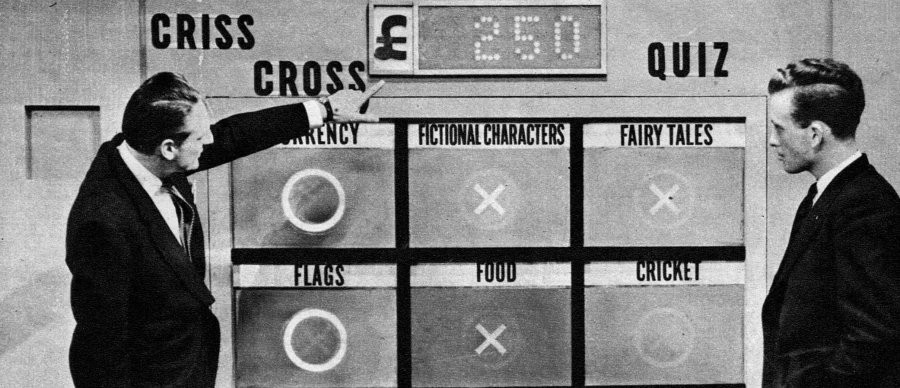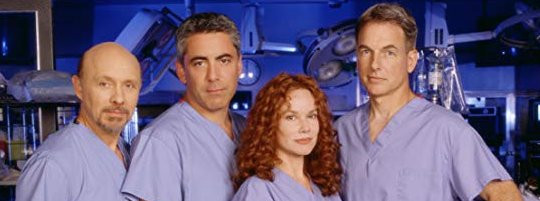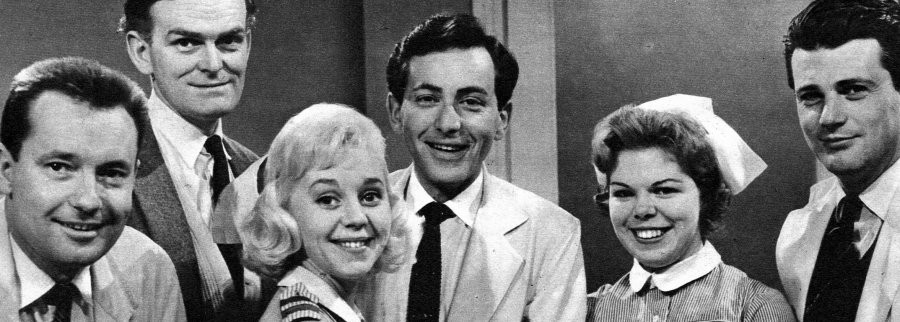
Emergency-Ward 10
1957 - United KingdomBritain's first medical soap, which was also the first of the country's twice-weekly serials, (airing on Tuesdays and Fridays), Emergency-Ward 10 started life as Calling Nurse Roberts, a six-week filler which went on to become one of the nation’s best loved programmes, reaching an average audience of 16 million people a week and 24 million at its peak.
The series was the creation of South African born Tessa Diamond, an ATV continuity writer who was responsible for writing the links for programme announcers, and who had already submitted several series ideas to the stations programme developers. One day she was discussing her despair at another rejection with her literary agent when he suggested that she write a series on hospital life. Tessa mistook his meaning, for what he'd visualised was a factual documentary series, whereas she went away and wrote the outline for a drama. Tessa pieced a story together overnight in her Queensgate flat, which she shared with two other friends and posted it off to ATV programming chief Bill Ward the following day, before going to Yorkshire for her Christmas break. On her return from holiday three days later there was an urgent message waiting for her from ATV. 'Script wanted immediately', it said. "You can't go ahead and write a pilot script about a hospital without doing some research" Tessa later recalled. "So, I quickly called a doctor acquaintance of mine and we got together for dinner and I spent the evening interrogating him about hospital life."
Set in the fictitious surroundings of Oxbridge General Hospital, the series was an instant hit -with one million viewers tuning in to the first episode in February 1957, and running for ten years. In the process it made stars out of the actors and actresses who walked its wards, not least of all Jill Browne, who played pin-up nurse (later Sister) Carole Young. The series also won praise from the British Medical Association for allaying people's fear of hospitals, and in 1962 the then Minister of Health, Enoch Powell, congratulated the show on its 500th episode and commented on the useful job it did in reminding the public of the need for immunization.
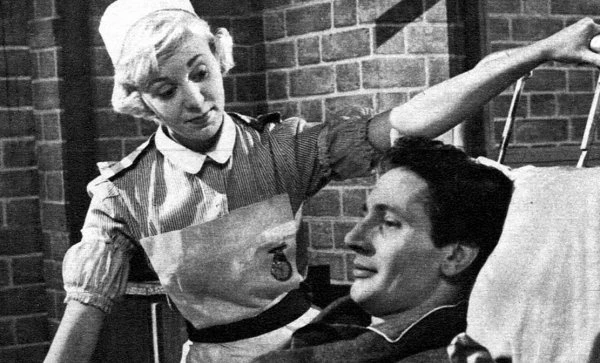
Although the series was high in drama it had a very low mortality rate (patient deaths were strictly limited to five per year), concentrating more on the lives of the men and women who staffed the hospital. These included Charles Tingwell as surgeon Alan Dawson and Ray Barrett as Dr. John Nolan. Richard Thorp who would later go on to star in another long running soap, Emmerdale Farm, played Dr. John Rennie, and John (Please Sir! - Upstairs, Downstairs) Alderton joined the cast in 1963 as Dr. Richard Moone. (Alderton later married his co-star Jill Browne). Other actors who went on to star in other long running TV serials included Blake's 7 stalwart Paul Darrow, and future Crossroads actress Jane Rossington.
There were, of course, none of the graphically visual blood and guts on show that audiences expect from medical dramas today especially in shows such as Casualty or The Golden Hour. Nevertheless, although sedate by today's standard the series did court a considerable amount of controversy with its portrayal of an interracial relationship between surgeon Louise Mahler (Joan Hooley) and Doctor Giles Farmer (John White) which included a rare on-screen interracial kiss. Even so, this scene between the two was toned down before transmission because it was considered "a little too suggestive". And when the wife and baby of Dr Anderson died in a flood, tearful viewers protested in droves.
The long list of patients who received treatment within EW10's walls included Ian Hendry, Joanna Lumley and Albert Finney, all of whom went on to bigger and better things. There was a 1958 full-length feature film, 'Life in Emergency-Ward 10', and a brief spin-off series starring Richard Thorp; Call Oxbridge 2000, but in 1967, with ratings beginning to fall, ATV supremo Lew Grade pulled the plug on the hospital's life support. Grade later admitted it was; 'one of the two biggest mistakes of my life.' In 1972 he tried to revive the series as General Hospital, although this had far lesser impact on viewers.
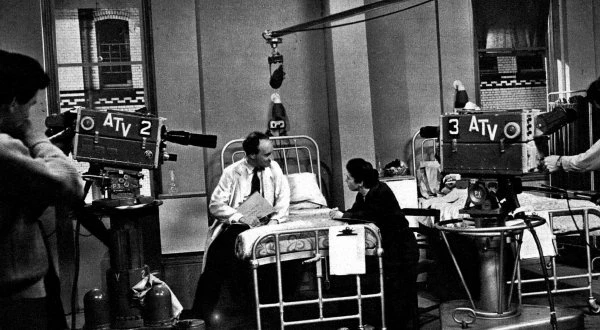
Trivia
Series creator Tessa Diamond already had some grounding in preparing to write the series; her father had been the Deputy Medical Officer of Health at Kingston-Upon-Hull, before being killed in an air-raid. She also had an uncle who was a doctor.
The series was originally scheduled to run for an experimental six weeks but producer Anthony Kearey had his reservations. He told his boss, Bill Ward, that it was not possible to produce two 30-minute episodes a week without scamped standards.
In order to avoid any serious medical bloomers Emergency-Ward 10 employed a resident medical advisor and as many as 20 honorary advisers.
The series was the first to introduce the British public to a Pacemaker, made in the USA but at that time not yet in use in the UK.
The British viewing public were so taken by the series that they used to address letters to the fictional hospital seeking medical advice!
Behind the scenes not all ran smoothly. In 1958 four of the shows stalwarts, Rosemary Miller, Frederick Bartman, Glyn Owen and Jill Browne fell out for one reason or another. In 1959 both Bartman and Browne returned to the series to pick up where they'd left off. "It was a strange feeling," said Jill Browne. "Like being away from home for a long time."
Props man on the series in 1960 was 44-year-old Mickey Parratt. He had to provide at least 200 'special props' for each episode, ranging from thermometers and hypodermic syringes to rocking beds and a complete premature baby ward. He once had to mock up a replica of a highly intricate Cobalt machine, used in deep-ray therapy, weighing a ton. In one 12-hour session he mocked up an iron lung which was so accurate that the medical consultant on the series enquired which hospital had loaned such a vital and expensive piece of equipment.
Seen this show? How do you rate it?
Seen this show? How do you rate it?
Published on December 10th, 2018. Written by Laurence Marcus for Television Heaven.


